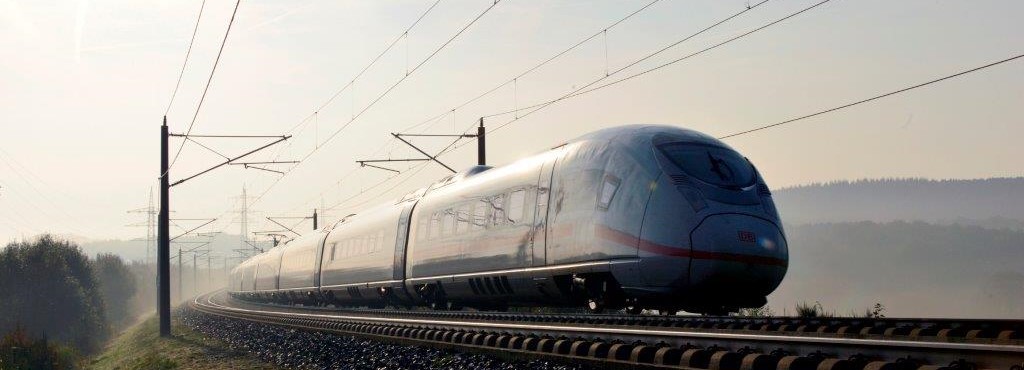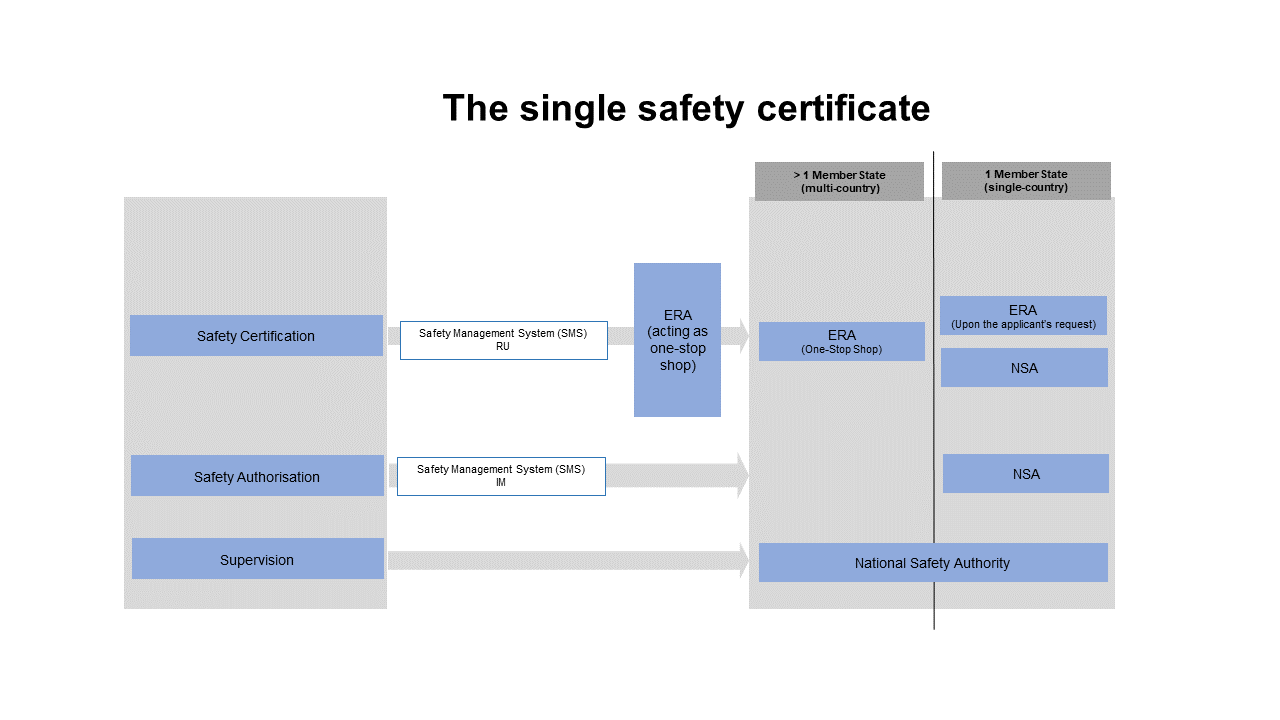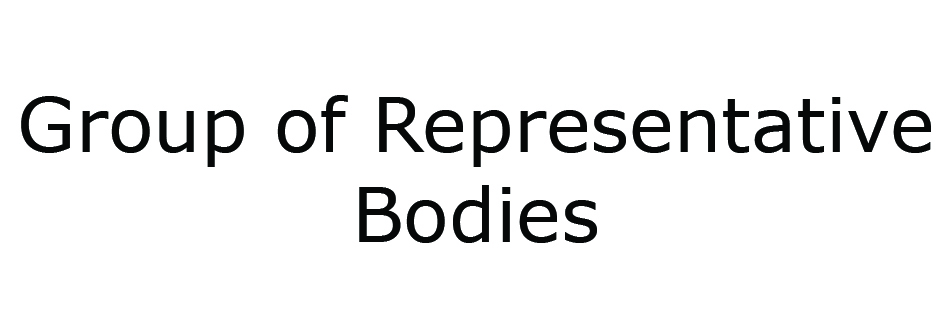4th Railway Package - Guide

Since 1991, the European railway sector has constantly been reformed by the European Union. The 4th Railway Package, which was adopted in 2016 is by far the largest and most complex legal initiative introduced so far. The 4th Railway Package consists of a political and a technical pillar which introduce substantial reforms for all stakeholders concerned.
The Guide below (drop-down menu) illustrates in four different chapters the reforms in the field of vehicle authorisation, safety certification and ERTMS trackside approval as well as the new role of the European Union Agency for Railways as ‘frequently asked questions’. Given the fact that the implementation of the 4th Railway Package is an ongoing process, the Guide will be updated on a regular basis, in line with the progress of the reforms being made on EU level.
Christian Rausch
Chairman of the Group of Representative Bodies (GRB)
What is the Safety Directive?
This Directive lays down provisions to ensure the development and improvement of the safety of the Union rail system and improved access to the market for rail transport services by:
- harmonising the regulatory structure in the Member States;
- defining responsibilities between the actors in the Union rail system;
- developing common safety targets (‘CSTs’) and common safety methods (‘CSMs’) with a view to gradually removing the need for national rules;
- setting out the principles for issuing, renewing, amending and restricting or revoking safety certificates and authorisations;
- requiring the establishment, for each Member State, of a national safety authority and an accident and incident investigating body; and
- defining common principles for the management, regulation and supervision of railway safety.
How did EU safety legislation evolve?
In 2004, the Railway Safety Directive 2004/49/EC was adopted to create a common European regulatory framework for safety, i.e. the tasks and responsibilities related to a safety management system (SMS).
The Directive introduced common safety methods (CSMs), developed by ERA to provide a common approach to assess the level of safety and performance of all actors (RUs, IMs, wagon keepers, etc.) at EU level and in Member States. It introduced a certification scheme for entities in charge of maintenance (ECM) of freight wagons and required Member States to develop a system of national safety rules.
Directive 2004/49/EC was complemented by Directive 2008/57/EC (interoperability) and 2008/68/EC (inland transport of dangerous goods).
The EC adopted Regulation 445/2011/EU introducing a system of certification of entities in charge of maintenance for freight wagons.
⇒ With each Directive, the EU extended the scope of safety and strengthened the role of the EU vs the Member States.
What is 2016/798 about?
Directive 2016/798 extends the scope of safety whilst centralising supervision on EU level. This is achieved by making ERA the single body for granting single safety certificates and by creating new bodies, tools and processes with the ERA to allow it to exercise its new mandate.
What is the scope of 2016/798?
The Directive applies to:
- the entire Union rail system.;
- as well as to ‘tram-trains’ as so far as they operate on national rail infrastructure.
The Directive does NOT apply to (unless Member States decide otherwise):
- local public transport systems (metros, trams and other light rail systems);
- Member States may exclude privately owned railway infrastructure (incl sidings), local, historical or touristic infrastructure and vehicles, light rail infrastructure occasionally used, vehicles primarily used on light rail infrastructure.
What are the main changes?
The main changes in 2016/798 are summarised below:
ERA:
- the Agency will issue the single safety certificate;
- introduction of a European common occurrence reporting (COR) instrument;
- clarification of the role and responsibilities of the railway actors;
- the supervision role is maintained by the national safety authorities;
- More details can be found in the chapter on the ERA Regulation.

RUs/IMs:
- Directive 2016/798 states clearly that “each actor is responsible for its own part in the railway system”, but the need for corporation between RUs and IMs increases due to the number of interfaces that need to be addressed to ensure a safe railway.
Common Occurrence Reporting (COR):
- The discussions on the common occurrence reporting comprising SAIT (Safety Alerts IT Tool) and SMD (Safety Management Data) are ongoing. A SAIT system was launched by ERA in September 2016 and is available for use, this system will also be developed further. For the SMD system, consultation has taken place over the past year and the options of a tool are currently being defined by ERA. A final solution has not yet been found for the interface between European and national occurrence reporting. The work on common safety methods for common occurrence reporting (CSM COR) will start, based on the RISC mandate, in 2020.
How will the future processes look like?
- It is foreseen that all applications for national and international safety certifications will have to be submitted to the ERA via its IT portal (One-Stop Shop -OSS) ;
- The ERA will be responsible for multi-country safety certifications (the single safety certificate) and could be responsible for single country safety certificates if the applicant choses so;
- The ERA can outsource the processing of the applications to individual experts via a pool of external experts (incl. those of NSAs);
- The ERA will charge fees & charges for the processing of the applications for safety certification following a pre-defined calculation method;
- In the case of a positive opinion, the ERA will grant the safety certification to the applicant and allocates a so-called EIN (European Identification Number).
Which role will NSAs have in the future?
- The NSAs will issue safety certifications for single country applications (single Member State only) if selected by the applicant;
- The concrete role of the NSAs in the safety certification procedure consists in checking the application as regards their respective national part; For this system to work, the ERA must have concluded a cooperation contract with each NSA;
- NSAs will keep the supervision role, which consists in overseeing the continued compliance with all legal obligations by Rus and IMs to use a SMS (safety management system), line with the CSM developed by the ERA;
- NSAs will have to exchange information and coordinate their supervision activities for international RU operations with the Agency;
- NSAs will also have to exchange information with the ERA as regards their supervision activities
- NSAs will also have to report to the ERA within the scope of the new mandate of the ERA to monitor and audit them (as well as other bodies, such as ECMs, NoBos, etc.). The final audit conditions to be applied by ERA to NSAs are still under discussion.
How much will the new procedure cost?
The ERA Regulation foresees that the Agency will charge for the services provided under the Safety Directive. The rules for fees and charges are laid down in Commission Implementing Regulation (EU) 2018/764. It is worth noting that procedures for the assessment of SMS already exists in the EU and for which fees & charges are levied by NSAs.
What is the role of the Appeal Body?
- The Safety Directive stipulates that the ERA and the NSAs take full responsibility for the certifications they issue;
- In the case of litigations related to a safety certification, the applicant shall refer its case to a so-called ‘Board of Appeal’ of the ERA;
- This body will be composed of experts which are appointed by the Management Board of the ERA (Member States/NSAs, EC, ERA);
- In the case of diverging views between the ERA, the NSAs and / or the applicant, the Board of Appeal shall provide an opinion;
- The ERA will charge fees & charges for the opinion of the Board of Appeal to the plaintiff.
When does the new safety certification regime apply?
The new safety certification regime applies as of 16 June 2019 with transitional provisions.
Transitional provisions apply in the case where a National Safety Authority (NSA) recognises that it will not be able to take its decision over the issue of a safety certificate in accordance with Directive 2004/49/EC before either 16 June 2019 or, 16 June 2020 in respect of those Member States that have notified the Agency and the Commission in accordance with Article 33(2) of Directive (EU) 2016/798.
In such a case, the NSA has to promptly inform the applicant and the Agency. The applicant is requested to submit, from 16 June 2019 or 16 June 2020 as appropriate, a revised application through the One-Stop Shop and the single safety certificate will be issued by the selected safety certification body (i.e. the Agency or the relevant NSA).
The Agency, when acting as safety certification body, will take into account the results of the assessment carried out by the NSA relating to the Part A safety certificate in order to avoid any duplication of assessment and so, minimise the inconvenience for the applicant. In that respect, the Agency will assist the applicant to supplement the application file with additional evidence necessary to comply with the additional requirements introduced by the new legal framework. The Agency and the NSA will also cooperate and coordinate for assessing the application file.
The decisions issued by the Agency between 16 June 2019 and 16 June 2020 should exclude the network(s) of any Member States having not yet transposed Directive (EU) 2016/798. However, a single safety certificate issued by the Agency should be recognised as equivalent to a Part A safety certificate issued under Directive 2004/49/EC whilst the NSA should continue to issue its Part B safety certificate with a validity period not exceeding the one of the corresponding single safety certificate issued by the Agency.
More information under https://www.era.europa.eu/applicants/applications-single-safety-certificates_en

